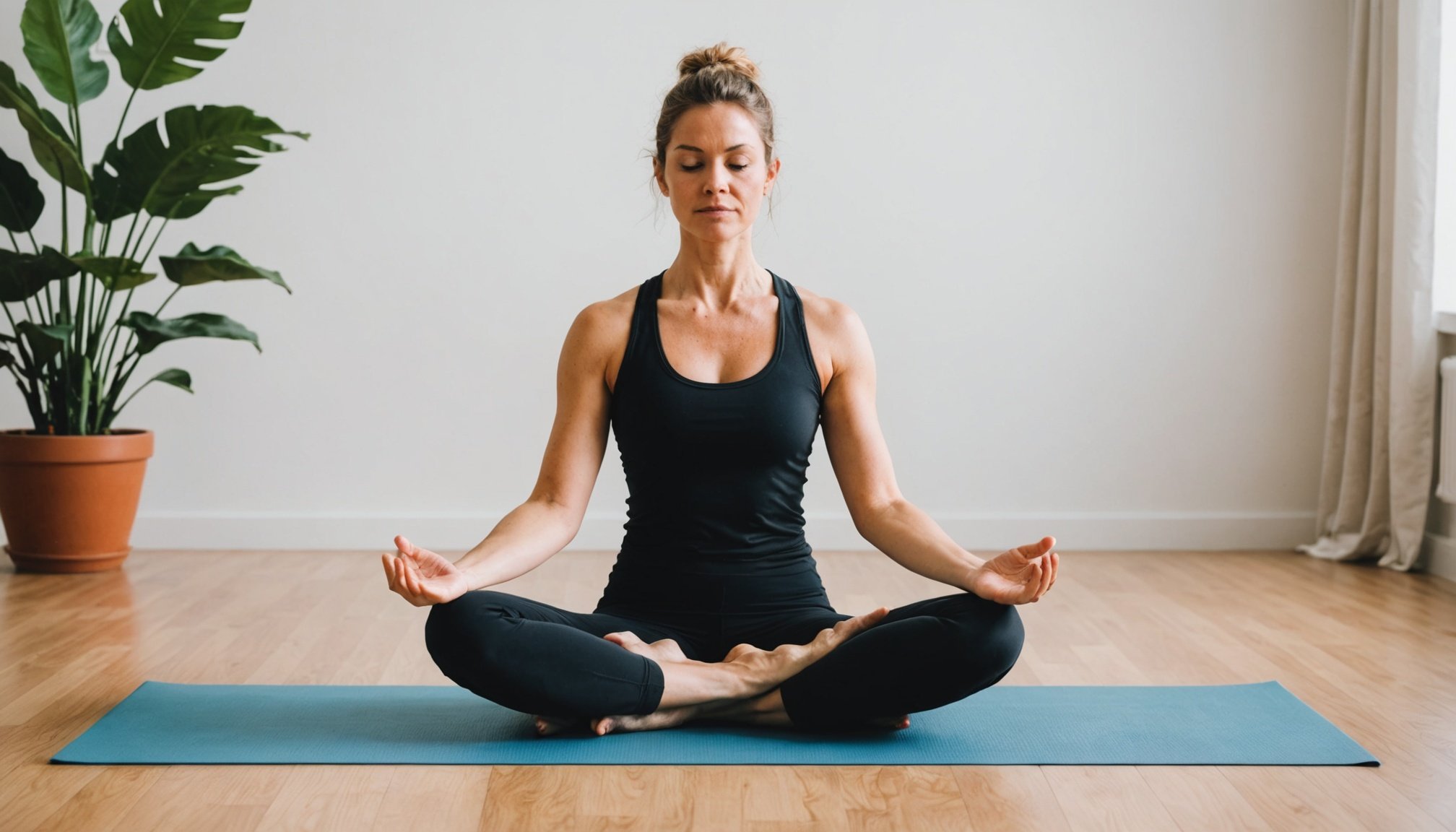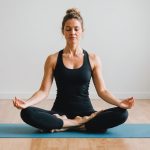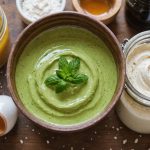Introduction to Yoga for Stress Relief
Yoga for stress relief serves as a natural remedy in today’s fast-paced world, helping individuals manage tension through its holistic approach. Central to this practice is the mind-body connection, which emphasizes the synchronicity between physical movements and mental focus, creating a profound sense of harmony and calm.
The mind-body connection plays a crucial role in yoga’s efficacy. When engaging in yoga, the focus is not solely on physical postures but on integrating mindfulness, breath control, and awareness into the practice. This fusion fosters an environment where stressors can be acknowledged and released. By honing in on this connection, practitioners can experience a noteworthy reduction in anxiety.
Topic to read : Design Your Perfect At-Home Yoga Oasis: Expert Tips for Maximum Comfort and Concentration
Different styles of yoga are tailored for relaxation, each with unique benefits. Styles like Hatha and Yin yoga are particularly effective due to their gentle poses and slow pace. These styles nurture mindfulness and encourage the release of tension held deep within the muscles, making them ideal for newcomers and experienced yogis alike.
By prioritizing the benefits of yoga, individuals can unlock a healthier, more balanced lifestyle. Exploring these yoga techniques can foster relaxation and provide a valuable tool for managing stress in daily life.
Also to see : Homemade Oily Skin Face Mask: Craft Your Own Using Everyday Kitchen Items!
Introduction to Yoga for Stress Relief
Yoga has been widely recognized for its benefits in stress relief due to its emphasis on the mind-body connection. Engaging in yoga encourages individuals to focus on their breathing and movements, calming the nervous system and reducing stress hormones. This practice not only helps alleviate immediate stress but also enhances overall mental well-being over time.
The mind-body connection is a cornerstone of effective yoga practice, fostering a deeper awareness of how emotions and physical states are intertwined. By recognizing this connection, individuals can better manage their responses to stress, developing a more profound sense of self-awareness and control.
Various styles of yoga can aid in stress relief, each offering unique methods to unwind and reconnect. Hatha yoga, for example, emphasizes gentle poses and extended breath work, making it suitable for those new to yoga or seeking relaxation. Yin yoga focuses on longer-held postures, promoting release and deep stretching. Meanwhile, Restorative yoga uses props and calming poses to create a meditative environment for the mind and body to rest.
Incorporating these styles into a regular routine can significantly enhance one’s ability to handle stress, providing sustainable wellness solutions.
Step-by-Step Manual for Your Personal Routine
Creating a personal yoga routine for stress relief requires careful consideration of your objectives and needs. Establishing clear stress-relief goals is essential as it directs your practice towards targeted outcomes. Begin by assessing your current physical and mental state to tailor your sessions appropriately.
Establishing Your Session Objectives
Setting realistic expectations is crucial in managing stress through yoga. It’s beneficial to define personal goals such as improved relaxation or reduced anxiety levels. Start by evaluating how you currently experience stress to set these objectives successfully. Acknowledging your mental and physical limits prepares you for a more effective practice, allowing gradual progress and avoiding frustration.
Crafting Your Routine Structure
Developing a stress-relief yoga sequence involves aligning poses with your goals. Choose poses that resonate with your body and mind without overwhelming you. Sessions can vary in duration, but consistency matters more than length. Allocate time for essential warm-ups and cool-downs to prevent strain and enhance relaxation.
Key Poses for Stress Relief
Including specific poses like Child’s Pose and Corpse Pose fosters calmness. These poses, coupled with controlled breathing, alleviate tension. Modifying poses to suit different skill levels ensures beneficial practice for everyone, from beginners to seasoned practitioners. Integrating mindful breathing with each posture enhances the anxiety-reducing effect, promoting a harmonious mind-body connection.
Techniques to Enhance Your Practice
Incorporating specific yoga techniques can significantly enhance your routine and amplify stress relief. Among these techniques, breath control or pranayama, stands out. By regulating your breath, you activate the parasympathetic nervous system, encouraging relaxation and reducing anxiety. Simple exercises like slow, deep breathing help to centre your mind and lower stress levels naturally.
Adding mindfulness practices to your yoga routine can further elevate its calming effects. Mindfulness involves staying present in the moment, observing thoughts and sensations without judgment. Practising mindfulness during yoga can deepen your awareness and help release tension stored in the body.
Visualization techniques can also offer improved relaxation. By envisioning serene landscapes or peaceful scenarios during your practice, you can foster a sense of calm and disconnect from stressors. Visualization connects mental images with physical sensations, promoting harmony and relaxation.
Incorporating these elements – pranayama, mindfulness, and visualization – not only enriches your yoga practice but also builds resilience against stress. Embracing these techniques in yoga encourages a deeper connection between mind and body, enhancing overall well-being. Regular practice can transform these techniques into powerful tools for managing life’s challenges.
Techniques to Enhance Your Practice
Incorporating yoga techniques such as pranayama, mindfulness, and visualization can significantly bolster your stress relief routine. Pranayama, or breath control, plays a crucial role in calming the nervous system, reducing stress markers, and promoting relaxation. Focus on deep, controlled breathing exercises to naturally lower anxiety and heighten awareness.
Adding mindfulness practices further enriches the mind-body connection, fostering a profound sense of presence. This can be achieved through simple meditation routines, focusing on the present moment, and cultivating awareness of thoughts and sensations. Mindfulness enhances your capacity to process emotions without judgment, offering a buffer against stressors.
Visualization techniques can also be intertwined with yoga to boost relaxation. Imagining serene scenes or achieving personal goals can positively influence one’s mental state, complementing physical postures. By engaging the imagination, practitioners tap into powerful mental resources, facilitating a more comprehensive release of tension.
To maintain the benefits of these techniques, regular practice is key. Integrating them into your daily yoga sessions improves mental clarity, emotional resilience, and overall well-being. Through dedication to these methods, one can achieve a harmonious equilibrium, making stress management more attainable and sustaining a balanced lifestyle.
Personalizing Your Yoga Practice
Personalizing your yoga practice is essential for harnessing its full potential in stress relief. A personalized yoga practice ensures that each movement and pose resonates with your unique physical and emotional needs.
Identifying Your Needs
To tailor your practice, it’s crucial to understand emotional triggers and physical limitations. Identifying these factors allows for the selection of poses that effectively target individual stressors. Consider keeping a yoga journal to document experiences, track progress, and reflect on the interplay between emotions and practice. This reflection aids in adjusting poses according to your evolving needs.
Resources for Personalization
Numerous resources can assist in crafting a routine that complements your lifestyle. Recommended books and reputable websites offer in-depth insights into yoga philosophy and techniques for personalization. For tech-savvy practitioners, apps provide guided yoga routines, track progress, and adapt to fitness levels. Additionally, community support, whether through local classes or online forums, fosters motivation and accountability. Engaging with a community can offer valuable feedback and encouragement on your journey. Such resources create an enriched environment for personal growth and development in yoga practice, ensuring that stress relief is both effective and sustainable.
Personalizing Your Yoga Practice
To build an effective personalized yoga practice, it’s crucial to tailor poses and routines based on individual preferences and needs. Start by identifying your emotional triggers and physical constraints to develop a yoga plan that fits your lifestyle. Recognising these factors can guide you in choosing poses that alleviate stress while acknowledging your body’s limitations.
Identifying Your Needs
Understanding your unique stressors and bodily conditions forms the foundation for a customised practice. Consider keeping a yoga journal to document experiences and reflect on progress. This serves as a useful tool for self-awareness and helps in adjusting your routine to better suit your needs. Continuously revisiting this journal can highlight patterns in stress and relaxation, offering insights into improving your practice.
Resources for Personalization
Equip yourself with diverse resources to enhance your personalised routine. Explore recommended books and credible websites for deeper understanding. Online platforms often provide extensive information and guided sessions, offering accessible ways to expand your knowledge. Furthermore, using apps can track progress, giving structure and motivation to your practice. These resources facilitate customization and ensure your yoga practice grows alongside you, promoting sustained well-being.
Maintaining Consistency in Your Routine
Establishing consistency in yoga is crucial for reaping long-term benefits. A structured routine supports habit formation, integrating yoga seamlessly into daily life. Begin by dedicating a specific time and space for practice. By setting designated yoga times, you solidify this habit and foster a more disciplined approach.
Building a routine involves employing strategies such as setting reminders. Utilize digital calendars or apps to send notifications about your sessions. This creates a sense of accountability and encourages adherence to the practice. Besides, having a consistent environment, free from distractions, enhances concentration and fulfilment.
Yet, maintaining consistency doesn’t imply rigidity. Flexibility in managing routine changes ensures that yoga remains accessible amidst life’s unpredictabilities. Adapt practices to fit different times or scales according to daily schedules, preventing feelings of frustration or guilt when deviations occur.
Furthermore, integrating variety by periodically alternating postures or sequences prevents monotony, keeping your engagement levels high. This approach also nurtures a deeper connection between mind and body. Ultimately, consistency balanced with adaptability fosters a sustainable yoga practice that caters to personal growth and stress management, imbuing a sense of calm and stability in life.
Maintaining Consistency in Your Routine
Ensuring consistency in yoga is crucial for harnessing its stress-relief benefits. Establishing yoga as a regular practice requires effective strategies to integrate it seamlessly into daily life. Begin by setting reminders to reinforce your routine, as consistent timing fosters habit formation and signals the mind to unwind. Creating a dedicated space for yoga, free from distractions, can further enhance focus and relaxation. This space becomes a refuge that naturally invites practice.
Building a routine involves flexibility, particularly in managing routine changes. Life is unpredictable, and adapting your schedule ensures long-term commitment. It’s essential to recognise that some days might require a shorter session, while others may allow for extended practice. This flexibility prevents frustration and burn-out, ensuring the habit remains enjoyable and sustainable.
Focus on the quality, rather than the length, of each session to maximise effectiveness and maintain motivation. Incorporate variability in your poses and sequences to keep the practice dynamic and engaging. Establishing a consistent yet adaptable approach allows yoga to evolve with your needs, providing continuous stress relief and promoting overall well-being. Remember, the key lies in steadiness, making yoga a harmonious part of your lifestyle.
Visual Aids and Resources
Incorporating visual aids into your yoga practice can significantly enhance learning and efficiency. Instructional videos and tutorials on online platforms serve as excellent resources, guiding practitioners through stress-relief yoga sessions with precision. These videos provide visual cues that are especially beneficial for newcomers, ensuring correct postures and movements, ultimately reducing the risk of injury.
Utilizing Videos and Tutorials
Platforms like YouTube offer a plethora of guided yoga sessions tailored for stress relief. Following along with experienced instructors facilitates a deeper understanding of sequences and encourages proper alignment. Watching an instructor demonstrate poses helps bridge the gap between verbal instructions and physical execution, catering to diverse learning preferences.
Incorporating Visual Aids in Your Practice
At home, creating a visual routine chart can serve as a quick reference to ensure consistency in practice. Apps explicitly designed for yoga provide a visual reference for poses, adapting to various skill levels and allowing for tracking progress. Recorded sessions provide crucial feedback for self-assessment, highlighting areas that may require adjustments.
Such resources equip practitioners with the guidance needed for effective stress relief and enhance engagement with the practice, promoting a richer yoga experience. They offer accessible, practical support for refining technique and advancing in your yoga journey.
Visual Aids and Resources
Integrating visual aids and resources into yoga practice enliven exercises and facilitate learning. Utilising instructional videos and tutorials is vital for understanding complex poses and maintaining correct form, especially for beginners in stress-relief yoga. Platforms like YouTube offer a variety of guided sessions that focus on relaxation and can contribute significantly to your yoga resources repertoire. Following along with seasoned instructors not only improves technique but also encourages a consistent practice through engaging content.
Utilizing Videos and Tutorials
Instructional videos serve as excellent visual aids in yoga. They provide a valuable reference for correct posture and alignment. Online platforms, such as Yoga With Adriene, present comprehensive stress-relief sessions, easily accessible and varied for different skill levels. The demonstration by experienced practitioners aids significantly in precision and confidence during practice.
Incorporating Visual Aids in Your Practice
Creating a visual routine chart at home helps reinforce memorisation of sequences and ensures regularity in practice. Moreover, apps such as Asana Rebel offer visual references, allowing adjustment of poses to ensure correct execution. Recording your sessions can also provide immediate feedback, enhancing self-awareness and refinement over time. These resources are instrumental in supporting a fruitful and dynamic yoga journey, fostering a deeper mind-body connection.
Conclusion and Continuous Improvement
Embracing a growth mindset is key to continuous improvement in yoga practice. As you evolve, consider how adapting your routine can lead to more effective stress management and personal development. This involves recognising changes in both life circumstances and ability levels and adjusting your practice accordingly.
Exploring advanced techniques and styles can enhance your journey, offering new challenges and insights into the mind-body connection. Techniques like Vinyasa for increased fluidity or Kundalini for meditative focus may introduce enriching dimensions to your experience. Such diversity not only prevents monotony but also deepens your yoga proficiency.
Encouraging a perspective focused on long-term wellness fosters motivation and commitment. Reflect on previous goals achieved, and set new objectives that challenge and inspire you further. Incorporate feedback from self-reflection or community resources to guide this progression.
Recognising that yoga is a lifelong journey allows for adaptability and persistence in practice. Setting a foundation for consistent improvement ensures that yoga remains a transformative and fulfilling aspect of your lifestyle. This continuous exploration and adaptation promote resilience, encouraging a balanced approach to holistic well-being amidst life’s challenges.











